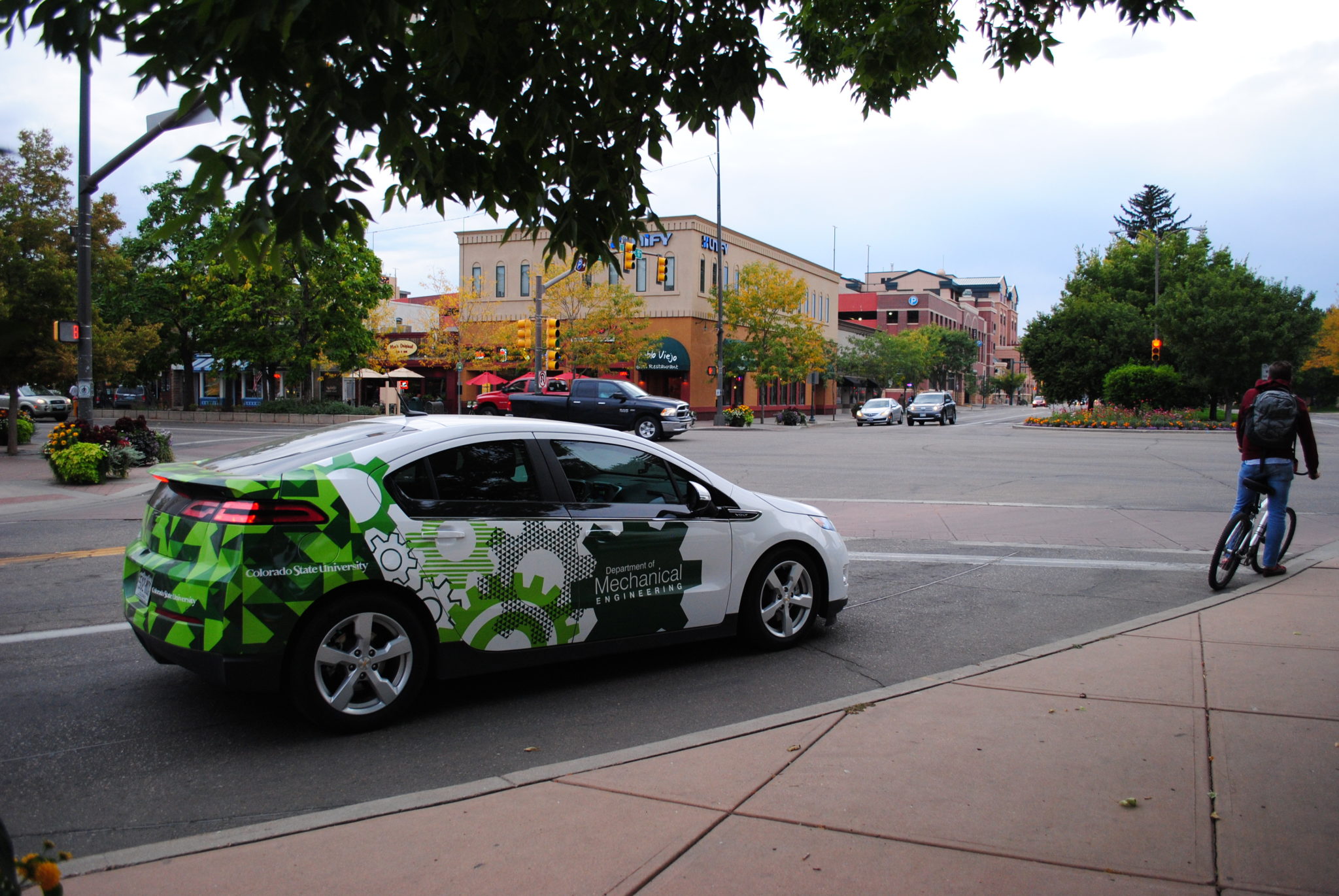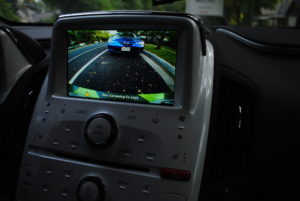
When you’re running late for work, there’s no better feeling than approaching a series of traffic signals just as the lights turns green, sailing through each intersection. With a $1.03 million grant from the Department of Energy, researchers at Colorado State University are leading a two-year study to analyze traffic and infrastructure in Fort Collins to help commuters, buses and trucks experience more of this feeling while traveling through town.
“If we could make big data sets that included where cars were going, what kind of cars there were, signal timings, and other factors, we could design a more efficient transportation system,” said Thomas Bradley, associate professor in the Department of Mechanical Engineering and principal investigator on the project.
The grant is part of an $80 million effort led by the Department of Energy’s Vehicle Technologies Office to “support advanced vehicle technologies that can enable more affordable mobility, strengthen domestic energy security, reduce our dependence on foreign sources of critical materials, and enhance U.S. economic growth.”
Bradley is working with CSU colleagues Suren Chen, professor in the Department of Civil and Environmental Engineering, and Edwin Chong, professor in the Department of Electrical and Computer Engineering. The team is also partnering with longtime collaborators at the National Renewable Energy Laboratory (NREL), Western Michigan University, local municipalities, and local Clean Cities Coalitions.
Mobility modeling
In partnership with the City of Fort Collins, Bradley’s team will gather traffic, vehicle and infrastructure data, which will inform models of the city’s traffic system. Probe vehicles will also be driven through Fort Collins to gather additional data to validate the models. These models, called microscopic traffic flow models, mimic the behavior of each vehicle as it moves through intersections, creating a simulation of the mobility of single vehicles.
Using the models to understand traffic flow, the team can alter aspects of the simulation to see how changes to data sharing policies, autonomy, or connected vehicles might affect the overall traffic system performance. By implementing just the right combination of changes, Bradley’s team hopes to improve the efficiency of daily traffic throughout Fort Collins.
“We’re going to look at a variety of problems and solutions, including trying to separate freight vehicles from passenger vehicles as they move through Fort Collins,” said Bradley. “Freight vehicles are high-energy, high-emissions vehicles, and if we can improve their efficiency, we can realize out-sized efficiency gains.”

After learning which traffic changes yield efficiency and fuel economy gains, the team plans to leverage its partnership with NREL to share data with other growing metropolitan areas like Denver, Colorado. Utilizing the Clean Cities Coalition Network, successes will be communicated to community and industry contacts across the country.
“We want to be able to use emerging technologies around autonomy, learning controllers, and big data not only make things like self-driving cars work, but also to save people time and money, and to realize environmental benefits,” said Bradley.
Autonomous vehicle data will be used to inform traffic simulations.Data collection will begin in October, paving the way toward better infrastructure management and a faster, more fuel-efficient commute for residents of Fort Collins and beyond.